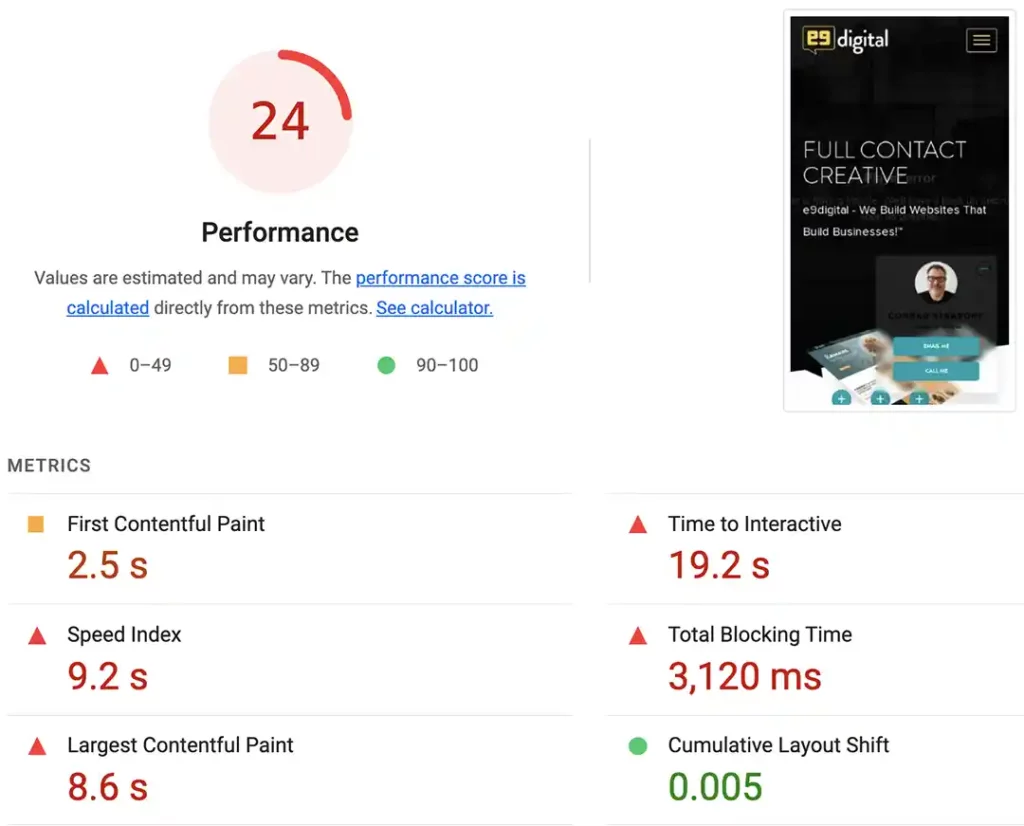The Era of Surveillance-based Advertising
The Era of Surveillance-Based Advertising: Navigating the New Marketing Landscape
Unlocking the Power of Data: A Double-Edged Sword
In today’s digital age, 83% of consumers feel uneasy about how advertisers monitor their online activities. As a marketing manager, this statistic should grab your attention.
The era of surveillance-based advertising is upon us. While it offers unparalleled opportunities for targeted marketing, it also presents significant challenges regarding consumer trust and data privacy.
Addressing Concerns: Transparency and Trust as Key Differentiators
Marketing managers often struggle to balance leveraging data for precision targeting and respecting consumer privacy. Potential concerns about data breaches and misuse are valid and can undermine brand trust.
The key to navigating this landscape is transparency. Communicate your data collection practices and ensure robust data protection measures are in place.
By being upfront about how consumer data is used and offering options for users to control their information, you can foster a relationship of trust and openness.
Evidence-Based Strategies: Building Trust Through Responsible Advertising
Research indicates that companies embracing transparent data practices are 70% more likely to retain consumer trust. To capitalize on this, consider adopting evidence-based strategies that prioritize consumer privacy.
Implement privacy-by-design frameworks and regularly audit your data processes to ensure compliance with regulations such as GDPR and CCPA.
Additionally, engage consumers with content that educates them about how their data enhances their experience, reinforcing the value proposition of surveillance-based advertising.
By proactively addressing concerns and prioritizing transparency, marketing managers can navigate the complexities of surveillance-based advertising and build stronger, more trustworthy relationships with their consumers.
70% of agencies need help integrating AI solutions.
70% of agencies need help integrating AI solutions into their tech stack, citing a lack of interoperability as a major barrier. 85% of marketing agencies need more in-house expertise to manage and deploy multi-AI agent systems effectively.
Understanding the Era of Surveillance-based Advertising
What is Surveillance-based Advertising?
Surveillance-based advertising is a marketing strategy that utilizes consumer data collected through various digital channels to create highly personalized and targeted advertisements.
This approach leverages data from online behavior, social media interactions, search queries, and offline activities captured through smartphones and IoT gadgets.
By analyzing this information, companies can craft advertisements tailored to each user’s individual preferences and needs, significantly increasing the likelihood of engagement and conversion.
Why is it Dominating the Marketing Landscape?
Surveillance-based advertising has become so prevalent because of its unparalleled ability to connect with consumers on a personal level.
Consumers are inundated with content as the digital landscape evolves, making it harder for traditional, broad-targeting advertisements to cut through the noise.
By employing detailed data analytics, businesses can ensure that their messages reach the right audiences at the optimal times, improving ROI and customer satisfaction.
Additionally, the competitive advantage gained through precise targeting helps brands build stronger relationships with their customers by delivering what they want when they want it.
Shifting from Lead Generation to Revenue Generation: A New Era for Marketing Managers
Unlocking 67% More Revenue: The Shift Every Marketing Manager Needs to Make
In today’s fast-paced digital landscape, marketing managers are bombarded with new strategies and tools claiming to revolutionize their approach. This statistic is not just a number—it’s a call to action for marketing leaders to reevaluate their strategies and realign their efforts with the bottom line. Schedule an appointment.
Where is This Trend Taking Us?
Surveillance-based advertising is continuously reshaping the future of marketing across various industries and platforms. From social media giants like Facebook and Instagram to search engines such as Google, there is a ubiquitous trend towards incorporating data-driven strategies to enhance advertising effectiveness.
As we look forward, the expanding realm of artificial intelligence and machine learning promises to refine these techniques further, potentially leading to even more personalized and seamless consumer-brand interactions.
However, this shift raises critical questions about privacy and data ethics, challenging marketers to balance innovation with responsibility.
As a marketing manager, understanding and navigating these dynamics will be crucial in shaping successful strategies in this transformative era.
Struggling with Poor Marketing ROI?

The Pain of Underperforming Campaigns
As a marketing manager, you’re no stranger to the constant pressure of achieving high ROI, yet despite your best efforts, the numbers just aren’t adding up.
You’ve meticulously crafted campaigns, selected ideal audiences, and pumped a significant budget into your strategy.
But you face dwindling engagement and stagnant sales growth instead of soaring returns. It’s frustrating to pour countless hours and resources into initiatives that fall flat, and your team’s morale wavers with each unsuccessful attempt.
The Skill Gap: Why 85% of Marketers Are Not Ready
The Skill Gap: Why 85% of Marketers Are Not Ready highlights the urgent need for upskilling in a rapidly evolving digital landscape. Advanced technologies like AI, data analytics, and automation are outpacing traditional marketing expertise, leaving most professionals unprepared to adapt and compete effectively.
The Agitation of Missed Opportunities
Imagine the opportunities slipping through your fingers every time a campaign underperforms. Not only are you losing precious time and money, but competitors are also edge ahead, capturing the audience’s attention and loyalty.
Each dollar misallocated magnifies the gap between your goals and realistic achievements. In today’s dynamic marketplace, poor marketing ROI doesn’t just slow growth—it threatens your business’s strategic objectives.
This vicious cycle can undermine credibility, erode team confidence, and impact future budget allocations.
AI-Driven Solutions: Your Path to Success
Break free from this cycle with our revolutionary AI marketing solutions. Our technology leverages advanced analytics to pinpoint exactly where your campaigns fall short, offering actionable insights for optimization.
Imagine having a digital companion continuously refining your marketing strategies, adjusting in real-time to maximize audience engagement and conversion rates.
Say farewell to guesswork; our AI tools help you target the right demographics, allocate budgets efficiently, and generate resonant content. With AI at your fingertips, unlock unprecedented marketing ROI and reclaim your competitive edge.
Ready to transform your marketing landscape? Discover the AI difference today!
Embracing Precision: A Marketing Manager’s Perspective
As a marketing manager, Jenna Williams has seen advertising techniques evolve. “Surveillance-based advertising is like having a magnifying glass over consumer behavior,” she says. Jenna highlights how it enables marketers to tailor content directly to individual needs, turning what was once a scattergun approach into pinpoint precision.
She adds, “The power of these tools lies in their ability to make the consumer feel understood and valued, making marketing campaigns significantly more effective.”
The Ethical Dilemma: Privacy vs. Personalization
Dr. Michael Chen, an expert in digital ethics, raises a critical point of contention regarding the rise of surveillance-based advertising.
While the personalization of ads through data collection maximizes relevance and engagement, it also intensifies the debate about consumer privacy,” he explains.
Dr. Chen emphasizes that it is up to marketing managers to navigate this digital landscape responsibly. Balancing personalization and privacy is crucial. Marketing managers must remain transparent about data usage to maintain consumer trust,” he adds thoughtfully.
OrchestraAI Marketing Platform – WATCH
OrchestraAI utilizes a compound AI agent architecture as an AI Agentic Platform. This architecture seamlessly integrates multiple specialized AI agents into a cohesive system, enabling it to tackle complex, multifaceted marketing tasks.
Future Prospects: Innovating with Consumer Consent
Innovation consultant Sarah Miller is optimistic about the future of advertising in the digital age. There is tremendous potential for developing new strategies that prioritize consumer consent and transparency,” she asserts.
Sarah believes embracing these principles will lead to more sustainable advertising practices.
She advises marketing managers to keep an open dialogue with consumers. Understanding their preferences and boundaries will allow us to innovate responsibly and build a digital ecosystem that benefits both parties,” Sarah concludes.
The era of surveillance-based advertising promises precision and relevance. Still, it is accompanied by critical ethical considerations that demand conscious effort from marketing managers and industry leaders.
The Era of Surveillance-based Advertising

Best Practice: Ethical Data Usage and Transparency
In the age of surveillance-based advertising, ethical data use and transparency are key. Successful brands invest in building consumer trust by ensuring data privacy and offering transparent data collection methods.
By clearly communicating how data is used, brands can foster consumer confidence and loyalty. Advanced analytics allows brands to create personalized advertisements, delivering content that resonates individually and enhancing engagement without infringing on personal privacy.
Glintwear
Glintwear, a niche smart clothing company, illustrates the power of surveillance-based advertising done right.
The company tailors its marketing strategies to each customer’s consent-driven data collection. The brand emphasizes transparency, giving users control over their data through an intuitive dashboard.
This practice of personalized customer experiences has driven a significant increase in conversion rates, demonstrating the potential success of privacy-centered advertising.
Zephyr Aroma
Zephyr Aroma, a budding artisanal fragrance brand, ethically uses artificial intelligence to analyze consumer behavior patterns.
Zephyr Aroma crafts personalized scent recommendations by anonymizing data and focusing on aggregated insights.
Their commitment to confidentiality has set a standard, converting casual browsers into loyal customers and spurring a wave of positive feedback about their innovative yet respectful approach to customer engagement.
Urban Green Spaces Co.
Urban Green Spaces Co., an eco-friendly landscape design firm, uses surveillance-based advertising to target environmentally-conscious consumers. By employing geotargeting technologies, they identify urban areas lacking green spaces.
Their proactive approach in sharing anonymized data insights with city planners showcases a commitment to community welfare, earning them public acclaim and solidifying their brand as a sustainability and ethical marketing leader.
By adopting these best practices, unknown brands like Glintwear, Zephyr Aroma, and Urban Green Spaces Co. survive and thrive in the competitive advertising landscape. Their success stories underline the importance of embracing transparency and prioritizing consumer trust in surveillance-based advertising.
Achieve a Competitive Edge with Precision Market Segmentation and Strategic Positioning
The Era of Surveillance-Based Advertising
Surveillance-based advertising has emerged as a dominant force in the digital age, where every click and search is stored and analyzed. It combines data collection and targeting technologies to personalize ad experiences for every user.
The Matrix, a groundbreaking platform for understanding complex systems, offers a revolutionary approach to adapting to this new era. But how do we get started?
Understanding the Matrix: A New Perspective
To harness the power of The Matrix, it’s crucial to comprehend its underlying structure. The Matrix isn’t just a cyberspace; it’s a system of interconnected data that learns and evolves.
Start by familiarizing yourself with its unique ability to map digital behavior and user preferences. This perspective transforms how businesses interact with potential customers, offering precise insights into how products instinctively choose their audiences.
It’s about tapping into a world of data that mirrors real-world desires and actions.
Implementing Strategies: Step by Step
Once you grasp the system’s foundation, the next step is implementation. Begin integrating data analytics into your advertising strategies. Leverage The Matrix’s AI algorithms to predict consumer behavior, tailoring content that resonates with individual needs and desires.
Create layered campaigns that operate across different platforms, utilizing the Matrix’s real-time feedback loops.
It’s about combining technology and creativity to shape future advertising campaigns. This is where curiosity meets innovation – experiment, discover, and refine your approach to heighten engagement.
Conclusion: The Future Awaits
Embracing The Matrix in the era of surveillance-based advertising isn’t just a strategy; it’s necessary to remain competitive. As consumers become increasingly aware of how their data is utilized, businesses must prioritize transparency and ethical data use.
The future of advertising lies in this balance – precision targeting through advanced algorithms coupled with genuine, value-driven content.
Dive into The Matrix, discover its potential, and redefine how you engage with your audience. The journey sparks curiosity and promises transformative pathways in understanding consumer relationships.
Understanding the Era of Surveillance-Based Advertising
The era of surveillance-based advertising marks a transformative phase in digital marketing.
Consumer data fuels the targeted advertising engine. Companies leverage advanced technologies like cookies, tracking pixels, and data mining to capture and analyze user behaviors. This hyper-targeted approach promises more personalized and relevant ads but raises serious privacy concerns.
The Mechanics Behind Targeted Ads
Surveillance-based advertising hinges on the ability to monitor and collect data about online activities closely. From browsing history to social media interactions, each digital footprint becomes a valuable asset.
Businesses analyze this data to create detailed consumer profiles, offering marketers insights into preferences and habits. While this enables brands to connect with audiences more effectively, it also ignites debates over ethical boundaries.
Privacy Concerns and Regulatory Challenges
As the pursuit for personalization intensifies, so do concerns regarding consumer privacy. The intrusive nature of data collection raises alarms about consent and transparency.
Regulators worldwide are stepping in, with laws like GDPR and CCPA aiming to safeguard personal information.
These regulations compel companies to rethink their strategies, emphasizing the need for ethical data practices and user control over their information.
Reimagining the Future of Advertising
The horizon of surveillance-based advertising is witnessing a shift. With privacy becoming paramount, the industry is exploring techniques like contextual advertising, which doesn’t rely on personal data.
Moreover, emerging technologies like blockchain propose decentralized data systems, giving users ownership over their information.
As the landscape evolves, so does the challenge to balance personalization with privacy, inviting discussions on the future role of advertising in a digital society.



